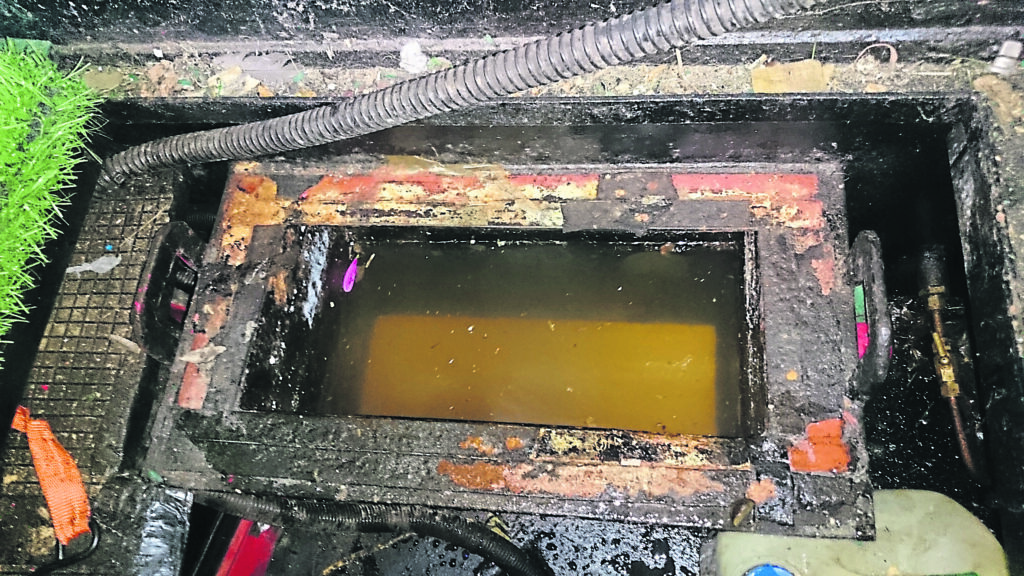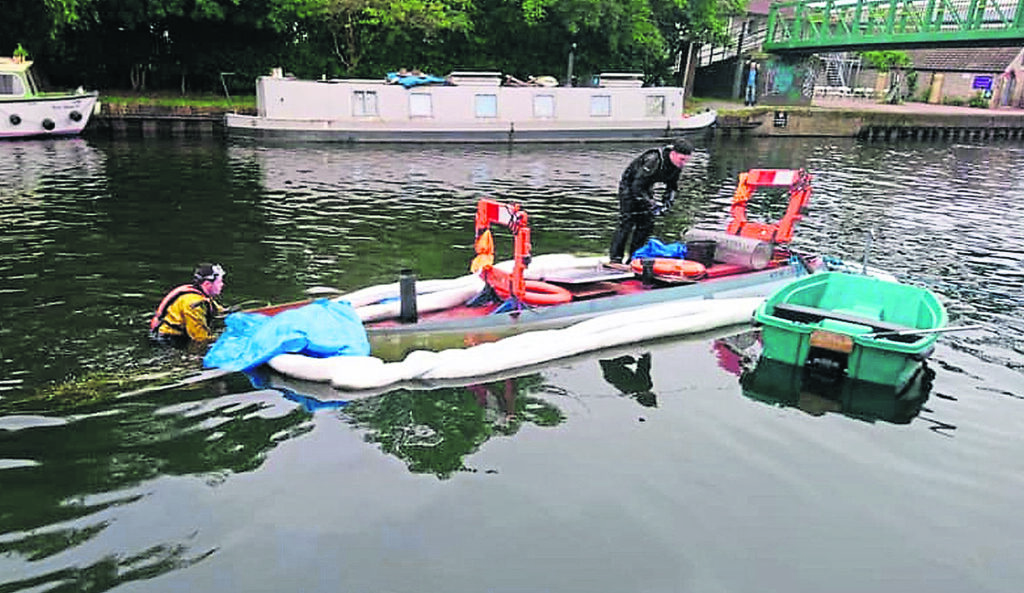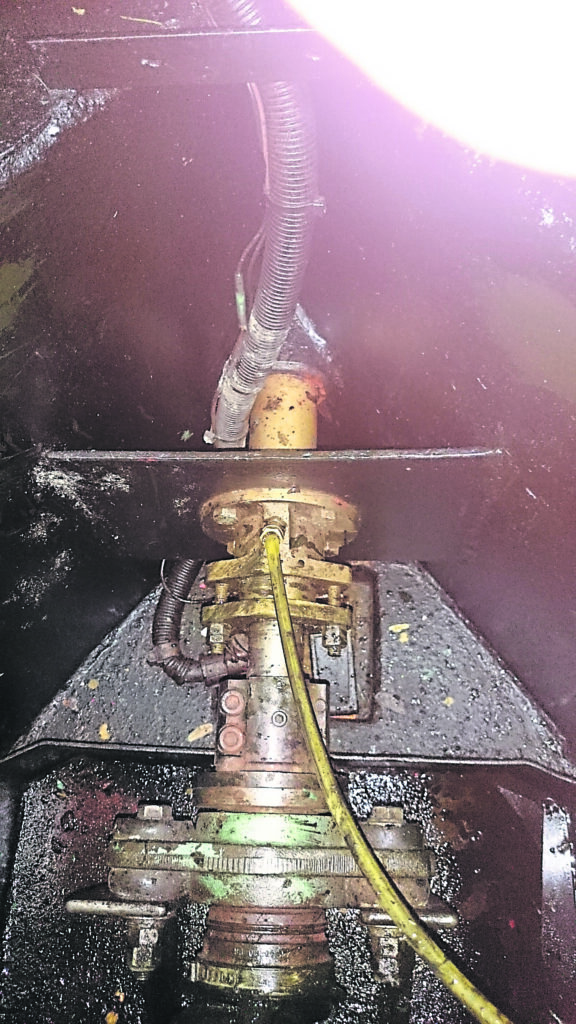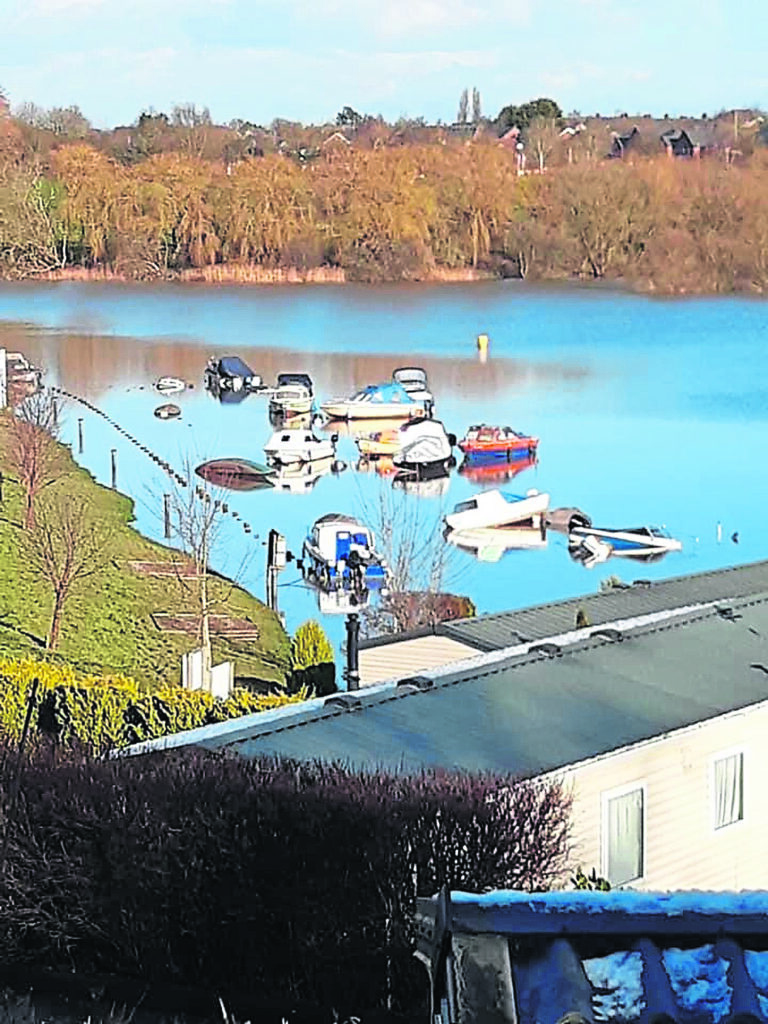AS WE experience the wetter months, it’s important to give your boat a thorough safety check and familiarise yourself with all its workings, writes Stephanie Horton of River Canal Rescue.
This may sound obvious, but do you really know how your boat has been built, where important items of equipment and machinery are located and how they should be used?
If you’re unfamiliar with the workings of your boat and its ‘at risk’ areas, for example, how or where water may potentially ingress, you’ll be unable to prevent a water build-up. If left over a period of time, this will not only damage your boat, it could have catastrophic consequences if the vessel’s sitting lower in the water.

While we know many factors cause boats to sit lower in the water, including: too many personal items on board, snow, rainwater ingress, changes in water levels and the overplating of steel-hulled boats, there are certain things you can be aware of to prevent a water build-up.
Hull openings below the waterline
Propeller shaft (cutlass) bearings and stern gland seals – there are different types of hull bearings and stern gland seals and most require regular maintenance. Do you know what type of prop shaft bearing is on your boat and is it easily accessed at the point where it passes through the hull?
Don’t take it for granted that an engineer servicing your boat will maintain this piece of equipment. Get into a routine of checking the propeller shaft hull bearing for signs of excessive water dripping and regularly grease, adjust and repack. If you have a ‘dripless’ seal, it needs silicon grease and will have to be replaced if it starts to drip.
Stern drives – follow the manufacturer’s servicing recommendations (which may mean annual checks of its seals, gaiters and any hose connections with the boat ashore). When on water regularly check the stern drive(s) inside the boat and use a torch and mirror, if necessary, to check for leaks/discoloured marks running from bolts or other fastenings, down the transom (where it’s mounted).

Depending on where the leak/marks are coming from, you may need to book your boat out of the water so the issue can be investigated and resolved.
Hull fittings – ensure you know where they are, below the waterline, and that you can easily access them from within your boat. Check every time you use your boat, preferably using a torch, as droplets often glint in torchlight. They’ll be hard to see in a dark bilge space.
Valves – hull fittings that let water into or out of the hull should be fitted with a valve. Check the valves haven’t seized up; if they have, free them off and/or get them serviced next time the boat is ashore. Also, routinely check the security and general condition of connected hoses or pipes; if a hose perishes or slips off the valve spigot, the boat could sink.
Hull openings above the waterline
Watertight levels – there are various construction standards re: the reasonable height of openings in the hull above a boat’s normal waterline, but a sensible rule of thumb is the boat’s hull and/or outer shell should be watertight to a height of 250mm above the waterline. If your hull fitting is below 250mm, ensure it’s in a good condition, sealed to the hull, and the hose or pipework is ‘swan-necked’ up so it rises at least 250mm above the waterline. The connected hoses and pipes should also be in a good condition with secure connections.
Don’t be in the dark – if your hull opening is below 250mm away from the waterline and you can’t see the fitting from inside the boat, don’t assume all is well. Take advice from your boatyard or a marine surveyor. The same applies if there’s no hose or pipework connected within the hull; the entrance needs to be sealed up or capped off.
Weed hatches – these give access to propellers and are a common cause of water ingress. They should be 150mm above the normal waterline. Many older boats have hatch openings closer to the waterline, so check the height of yours and if it’s less than 150mm speak to a boatyard about extending the hatch trunking.
Weed hatch maintenance – when cruising, the stern digs down into the water, reducing the distance between the water and the weed hatch opening. And when turning, the propeller throws water up against the underside of the hatch lid, at great force. This can be a lethal combination if the hatch lid does not fit correctly or the seal is in a poor condition, as water will be allowed to flood in.
Ensure your weed hatch lid and seal is in a good condition and every so often check water isn’t coming through while the boat’s cruising. Ensure the weed hatch is sealed correctly after opening it to check or clear the propeller.

Bilge pumps
While it’s great to keep water out, if it does get in, do you have the right equipment to get rid of it, quickly?
At least one automatic float-switch electric bilge pump should be positioned in the lowest part of your boat’s bilge and permanently connected to one or more batteries so it will activate and run when no one’s on board (as the circuit is likely to bypass the battery isolation switches, ensure it’s protected by an inline fuse or circuit breaker).
If your bilge is split by watertight bulkheads, ideally there should be an automatic bilge pump in each compartment – typically in the engine and accommodation space. Ensure the bilge pump’s discharge hose is connected and securely clamped to a hull fitting, and that it’s a sensible height above the waterline.
If your boat is unoccupied and on your return you find your batteries are partially or fully discharged, this may be due to the bilge pump running. Most boats should not have enough water in their bilges to activate the bilge pump, so if this is happening, don’t ignore it; it’s indicating a problem.
Bilge filters – do your bit for the environment and don’t allow polluted water to pump back into our canals and rivers. Install a bilge filter such as Bilgeaway; it removes hydrocarbon contaminants (petrol, diesel, engine oil etc) from the bilge area and uses a non-toxic solution to render them non-reactive so they can be safely disposed of.

Cockpits and decks that drain into bilges
Some narrowboats have aft decks and/or forward well decks that channel rainwater into the underlying bilge. If this is your boat, keep the drain holes clear from a build-up of leaves or other debris. If they become blocked, rainwater may collect on the deck or step-wells and run over the door sill into the cabin. And remember to have an automatic bilge pump (and filter) where the rain water drains into.
Domestic water systems
Leaks from electric water pumps are a particular problem in many boats as the pump is often inaccessible and unseen. Left unchecked, a small leak can cause damage to floorboards and hull linings etc not to mention the panic that sets in when you get wet feet first thing in the morning. So how can you spot a leak?
If the pump on your boat runs for a few seconds every so often, and you’re not running water through a tap, it may be because the upstream pressure has reduced and the water pump has automatically cut in to restore it. Check this out or speak to a boatyard.
Domestic water pumps and their filters are prone to frost damage so if not using, particularly in a cold snap, drain down the water pump, filter and associated fittings.
Routinely check the pump for signs of leaks at the start, and periodically throughout your cruising season. Liveaboards should do this monthly. Use a torch to check the pump when running and static, and if possible, position it and its fittings above a tray so you can easily spot any leaks.





